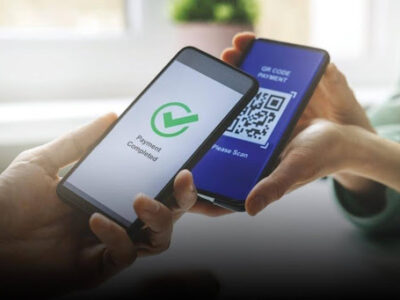The mobile market will continuously grow exponentially, and mobile application development is exploding. The business of application creation will never be more attractive than in the past. By 2023, the mobile app market is expected to reach $311.25 billion. Many business owners are inclined towards investing in the mobile app market, but how can they ensure a profit?
Creating a mobile app requires abundant patience, wise investments, and technical skills developers offer. Thus, we present here a complete guide to develop an application.
What is Mobile App Development?
It is a process through which the developers will design programs that efficiently run or are compatible with mobile devices. The mobile app development process is not about creating or writing the code but ensuring that it is compatible with mobile platforms.
However, after creation, the owner should ensure its proper market release, which needs to go through various stages. Like, validating your application idea to learn about the audience, creating wireframes, testing stability, and other regular maintenance.
How Can Businesses Develop Successful Mobile Applications?
Before starting the mobile app development process, the most important thing is to finalize the software development methodology. Keep moving up with the trend, and for that, it requires facilitating quick release; choosing the Agile development methodology is a safe bet.
Thus, here is a simple guide to develop an application in simple steps:
1. Bring Idea with Mobile App Idea
According to Statista, there are approximately 3.48 million apps on the Google Play store and 2.22 million on the Apple store.
In the future, the number is constantly increasing. However, with a growing number of apps into consideration, developing an idea about a mobile app is a complex and thoughtful process.
The unique idea is that the better the chances of surpassing in the competitive market. The chosen idea will solve a bigger user problem and offer a high-value proposition.
2. Research and Explore Target Market
After having an idea to apply, the next step towards from the concrete concept of a foundation. This part of mobile application development requires market research, planning, and analysis of demographics, behavior patterns, and customer requirements. Some critical points included in the guide to develop an application :
- Forming a blueprint of all functionalities
- Decide about its primary purpose
- Target audience and features that enable you to stand apart from a competitor.
- Think about its benefits and projected performance in the app market.
3. Wireframe Application
Image Source: cleart.com
In this step, the business should decide how the mobile app should appear, its features, and its interface. The company should consider which process is conducted in-house and which will be outsourced. The purpose of creating features resulting in a functional app is all possible via online wireframing tools.
However, creating a roadmap enables establishing the links between the screen and users to navigate the program quickly. Before sketching, prepare the list like:
- Never underestimate the possibilities when it comes to including your brand.
- Key differences between the mobile app and website use should not be overlooked.
- User experience requires a great deal of attention and concentration.
- Searching for new approaches to use for the brand.
4. Sketching Business Model
In this stage of development, the business goes beyond the vision and mission of the app and includes practical approaches like application revenue, business model, time constraints, and budget. Thus, performing a SWOT analysis, determining goals and prominent use cases, and categorizing users based on demographics, location, and behavior is crucial.
5. Prototyping
Image Source – invisionapp
Prototyping means creating a rough version of the application, which helps the business to obtain customer feedback and evaluate the feasibility of the application. Other approaches include proof of concept and minimum viable product.
In proof of concept, the application is built with the required functionalities, and it presents how the application is made. On the other side, MVP is a miniature version of the end product which includes essential features.
6. Creation of App
For the creation application, various processes and procedures are involved. The developer should accomplish the following things in your backend:
- APIs
- Servers
- Database for actual storage solutions
However, the designer’s role is to build a screen of mobile applications. The application should prioritize customer interactions, so UX/UI is crucial.
7. Testing & Deployment
Testing and fixing bugs involved lesser cost than fixation of bugs at later stages. Testing is involved at every stage of mobile application development. Robust app testing should include its performance and user experience and implement industry best practices.
Post-testing, metrics like statistics, import information, testing types, etc., must be documented. However, the final deployment of the application process is done after post-testing. It further involves the security operation, collecting user feedback, maintenance, and incorporating new features through updates.
Conclusion
Mobile app development is constantly evolving. Thus, if you have created an application today using data from past years, it cannot compete in the current market scenario. Market trends of mobile applications can break the project’s success. Thus, it is imperative to understand mobile trends by the developers and team members. The mobile app development in Atlanta’s help will give you a clear vision of how the industry is growing.








Comments